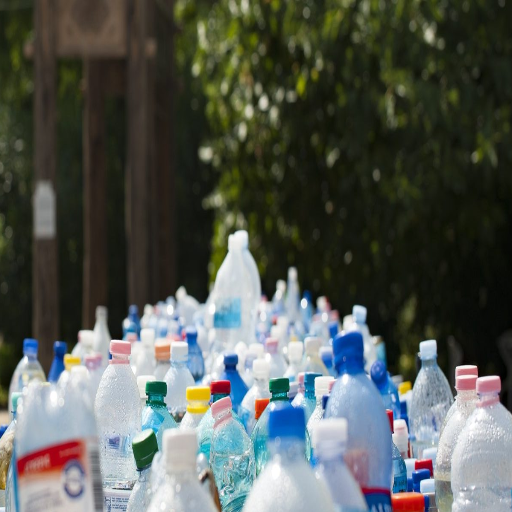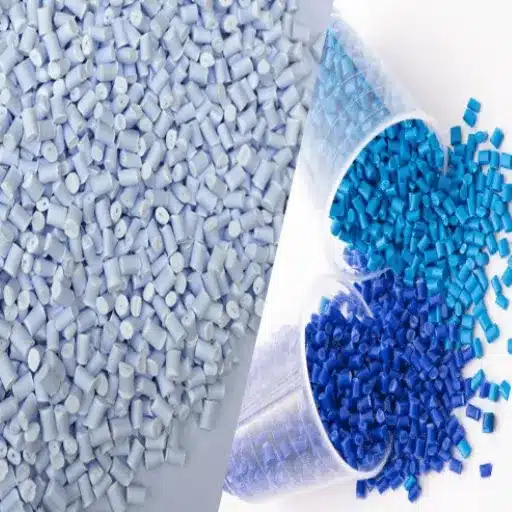Plastic is an integral part of modern life, as it has been incorporated into almost every aspect of our daily routines. From waking up in the morning to having a cup of coffee, the plastic material goes virtually unnoticed, but it is the very substance from which we make anything: from the kitchen utensils with which we prepare our dishes to the various gadgets we use for entertainment. Well, what’s there to know about a material that has transformed industries, spurred ingenious solutions, and, along the way, also presented environmental challenges? In this article, we will embark on an exploration of interesting facts about plastics-their history, oddly curious uses, and the impact they exert upon our world. So fasten your seatbelt and prepare to embark on a fascinating journey that reveals the everyday roles of plastics in ways you never imagined.
Understanding Plastic: Composition and Uses
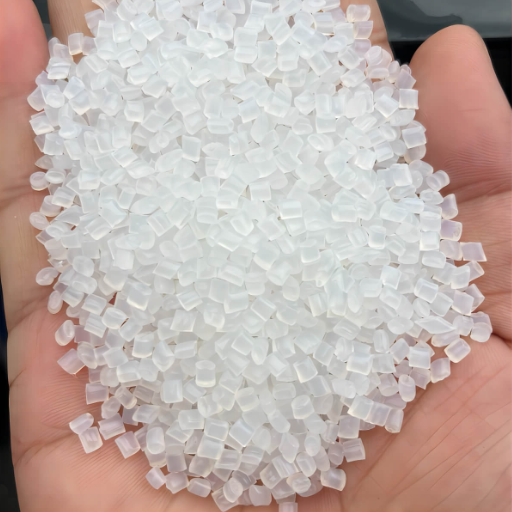
What is Plastic Made From?
Initially, plastics were substances derived from crude oil, natural gas, and coal. These fossil fuels formed the base materials that enabled the creation of polymers, which in turn produced plastic. These raw materials undergo various processes to be refined into intermediate chemical compounds, such as ethylene and propylene. These are polymerized, one polymerization reaction to another, as long chains of molecules, thereby creating the compound known as plastic.
Currently, plastics are broadly classified into thermoplastics and thermosetting plastics. Thermoplastics, including polyethylene and polystyrene, can be melted and reshaped multiple times, making them ideal for packaging and consumer goods. Thermosetting plastics, such as epoxies and phenolics, undergo an irreversible hardening process after they are molded; their durability is utilized in construction and electronics.
Interestingly, green alternatives are gaining attention nowadays. Bio and green plastics originate from renewable sources, such as the starch content in corn or the juice of sugarcane. Such materials aim to reduce the use of fossil fuels and make greater efforts toward an ecologically friendlier solution to the environmental problems associated with traditional plastics.
Plastic: Use Cases in Daily Life
It is an integral part of present-day life. Due to its flexibility, light weight, and affordability, plastics find applications in a wide range of industries. One of the more prominent uses is in packaging; this role is not overlooked, as it helps reduce food waste by allowing for airtight seals to be formed around food, enabling it to be stored and kept for more extended periods. Similarly, plastic containers and wraps offer convenient solutions for storing and transporting goods.
Medical and healthcare institutions have always relied on plastics for the fabrication of medical equipment. Thus, commercial syringes are filled with these materials due to their ability to be sterilized. Likewise, plastic baths are necessary in applications that require the manufacturing of IV bags. It is essential in construction for the making of plastic materials such as PVC pipes, insulation, and weatherproofing, which contribute to building efficiency and long-term sustainability.
Thanks to their ability to provide electrical insulation and structural support, plastics are indispensable in technology and electronics, where casings, wiring, and circuit boards utilize them to achieve this purpose. Another application of plastics in the automotive and aerospace industries is the fabrication of parts that aid in reducing vehicle weight, thereby achieving improved fuel efficiency and enhanced performance.
However, moving from industrial uses, plastics improve the quality of daily living through household appliances, furniture, and wearables. Recycling-oriented innovations and biodegradable plastics create greener solutions for these wide-scale applications, steering the plastics industry toward sustainability.
Common Types of Plastic Bags and Their Applications
Plastic bags are ubiquitous nowadays, being produced for a wide range of purposes, including both industrial uses and consumer goods. Learning about the various types of plastic bags and their applications will provide insight into the versatility and importance of these bags in different areas.
High-Density Polyethylene (HDPE) Bags: HDPE bags are renowned for their exceptional durability and strength, often used for giveaways at grocery stores, retail shops, and for food packaging. Thus, HDPE bags are resistant to moisture and chemicals, and are lightweight yet can carry substantial loads. They are also used for trash liners and garment covers.
Low-Density Polyethylene (LDPE) Bags: LDPE bags are softer, flexible, and transparent than those of HDPE. They become smooth and stretchable, which in turn allows them to cater to applications such as newspaper covers, dry cleaning, and bread packaging. They’re ideal for applications that require clear packaging, such as produce or bakery bags.
Polypropylene (PP) Bags: Polypropylene bags are tough and heat-resistant. Accordingly, snack foods, chips, and other consumables are packed in Polypropylene bags, and due to their excellent clarity, they are also used for retail packaging and gift packaging. They also provide a high degree of chemical resistance, which suits industrial storage needs.
Biodegradable and Compostable Bags: Increasing environmental awareness has led to a secondary prominence of using biodegradable and compostable plastic bags. They, made from plant-derived substances such as PLA or modified petrochemicals, are intended to be broken down under specific circumstances. Industries that base themselves in sustainable packaging, such as food service and agriculture, use these bags.
Vacuum Sealed Plastic Bags: Food preservation utilizes these bags the most, as air is removed and items are tightly sealed, ensuring the contents remain fresh for an extended period. Vacuum seal bags are commonly used in food processing, particularly for freezing foods, meats, and deli items.
Reclosable and Zipper Bags: These bags, capable of closure via a zipper or press seal, serve multiple purposes and, of course, allow for reuse. Typically, such bags are used for storing perishables, sorting household items, and packaging small hardware or craft materials. The closure mechanism keeps the contents safe from moisture and contamination.
Each type of plastic bag serves a specific packaging purpose, tailored to the industry’s demands, striking a healthy balance between functionality and cost. With advancements in materials science and environmental conservation, industries are now going greener by adopting alternatives that lower their environmental impact while improving the performance of plastic bags.
The Impact of Plastic Pollution on Our Environment
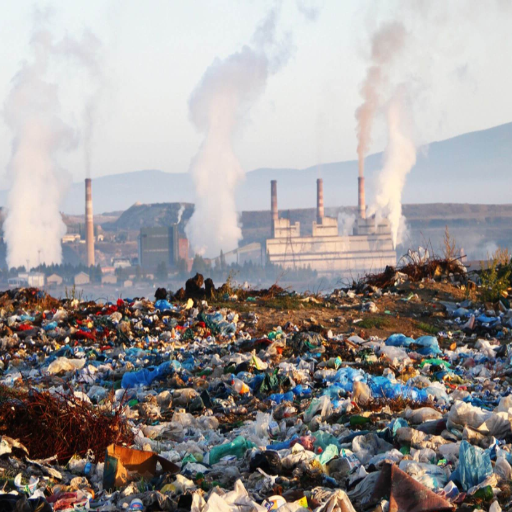
Plastic Pollution Facts: Stats You Must Know
Global Plastic Production: Over 400 million tons of plastic are produced annually worldwide, a significant portion of which is used for single-use items.
Ocean Pollution: Every year, anywhere from 8 to 10 million tons of plastic trash gets dumped in oceans, making up 80% of all marine debris. Marine life and ecosystems are greatly affected by such threats.
Recycling: Only 9% of plastic waste is recycled globally; 12% is incinerated, and the other 79% is dumped into landfills or the bulk of plastic enters nature.
Impact on Wildlife: Plastic pollution has a detrimental effect on over 700 marine species, affecting them through ingestion, entanglement, or disruption of their habitats.
Microplastics: Billions of pounds of microplastics are present in oceans, with microplastics detected in drinking water, food, and even the air we breathe.
Economic Cost: The impact of plastic pollution on oceans and coastal areas is estimated to cost $13 billion annually, primarily due to declines in tourism and fisheries, as well as the costs of clean-up efforts.
Growth Forecast: In the absence of intervention, plastic entering aquatic ecosystems is expected to nearly triple by 2040, reaching a staggering 29 million tonnes per year.
This places special emphasis on the urgency for innovative alternatives, capable policies, and international collaboration to reduce the environmental release of plastic waste and promote sustainable alternatives.
How a Piece of Plastic Makes Its Way Into the Oceans
An oceanic circulation once liberates a piece of plastic into an intricate and destructive journey wherein currents, wave regimes, and other environmental agencies take their part. Larger pieces of plastic, such as bottles, bags, etc., mostly tend to remain afloat on the surface of the ocean. These pieces can be carried by currents for several thousand miles, finally reaching regions such as the Great Pacific Garbage Patch, an accumulating area estimated to hold around 1.8 trillion plastic items, spreading out over an area larger than Texas.
Under the action of the sun and the ceaseless motion of waves, this plastic debris gets broken into tiny fragments known as microplastics. Microplastics (particles measuring less than 5 mm) now account for a significant share of oceanic plastic pollution. Their small sizes make removal almost impossible from the water, and they find their way into marine ecosystems. The organisms that eat microplastics range from plankton to large fish, and when ingested, the chemicals get bioaccumulated in the food chain.
Ocean plastics, however, continue to have a lifecycle. Some sink to the sea floor and contribute to invisible pollution in benthic ecosystems, while others get washed ashore, affecting coastal shorelines on an international scale. Beyond environmental degradation, livelihoods dependent on various marine industries bear the brunt of decreased biodiversity and the associated costs of cleanup operations. Solving this global crisis requires a collaborative effort to achieve a significant reduction in plastic waste production, establish effective waste management systems, and develop international policies to protect the oceans from further degradation.
Effects of Single-Use Plastic on Marine Life
Single-use plastics are disastrous for the marine ecosystem, and are making it improbable to maintain its balance and biodiversity. Statistics prove that more than one million marine animals, which include fish, seabirds, and mammals, die every year because of plastic pollution. Plastics degrade into microplastics that marine animals ingest as part of their food. To illustrate this further, sea turtles often ingest plastic bags, mistaking them for jellyfish, with the consequences including intestinal blockages and starvation. Similarly, microplastics consumed by tiny organisms, including plankton, interfere with the ecological stability at the bottom of the ocean’s food chain and have consequences for higher trophic species.
Today, numerous figures have been cited to estimate the weight of plastic waste entering marine waters, with around 14 million tons reaching the ocean each year. Much of this plastic is alleged to originate from improper waste management practices in coastal areas. Besides being lethal to marine life, plastic pollution deposits harmful chemicals into the ecosystem. Persistent organic pollutants (POPs) present in plastics leach into the water and accumulate in aquatic organisms, potentially significantly affecting their reproduction and survival rates. These chemical contaminations may also be passed along the food web, potentially posing health risks to humans who rely on seafood consumption.
To eliminate this scourge, innovative solutions are needed to prevent waste from entering the marine environment, such as biodegradable alternatives to single-use plastics, advanced recycling systems, and strict international regulations. Reinforcing environmental education and promoting sustainable consumption practices would equally contribute to containing this menace.
Lifecycle of Plastic: From Creation to Disposal
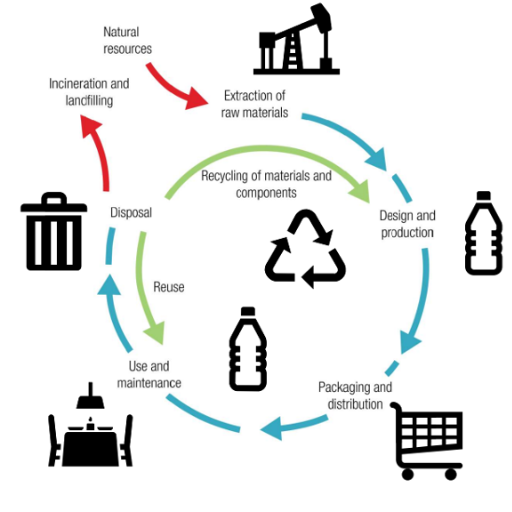
How Plastics are Produced from Fossil Fuels
Plastic is manufactured starting from the extraction of fossil fuels, chiefly crude oil and natural gas. These are then taken to refineries to be converted into a chemical building block called the monomer. Ethylene and propylene are the two most common monomers used in plastic production, and they are typically produced by cracking. Cracking is a process that breaks down larger hydrocarbon molecules into smaller, more reactive ones by subjecting them to heat, pressure, and chemical catalysts.
Once the monomers are produced, they undergo polymerization in which the monomers bond to form the chains called polymers. By altering the structure and arrangement of these chains, various types of polymers, ranging from polyethylene to polypropylene to polystyrene, are formed. Depending on the properties desired in the final plastic product, additives such as plasticizers, stabilizers, and colorants may be added during manufacturing.
Then, the plastic is shaped and molded through various processes, such as extrusion, injection molding, and blow molding, to create articles that range from packaging to automotive components. It is a very energy-intensive process and thus is a major source of carbon emissions, with estimates suggesting that the polymers industry contributes more than three percent of the total global greenhouse gas emissions annually.
Advancements in technology and industrial practices have been increasingly driving the adoption of sustainable options, such as chemical recycling and bio-based plastics, to mitigate the impact of plastics on the Environment. These innovations have aimed, first, at reducing fossil fuel usage and addressing concerns about climate change and resource depletion.
Time to Break Down: The Longevity of Plastic Wastes
Plastic waste is known for its incredibly long degradation timeline, sometimes even lingering for centuries in an environment. The conventional plastics, polyethylene and polypropylene, used mainly for packaging and consumer products, undergo a degradation period that may last approximately 500 to 1,000 years. This extended life cycle is due to the plastic being engineered to last a long time, thereby resisting natural decomposition through microbial activity or other processes. Thus, the accumulation of plastic waste presents enormous challenges because, apart from landfilling the waste, there is also leakage into the ecosystem, harming wildlife species and disrupting natural habitats.
Microplastics add another level of complexity to an already complex scenario. While some plastics undergo photodegradation or are mechanically ground into finer particles over time, these microplastics persist in the environment. Once in soil or water, microplastics are very hard to remove, and therefore, become a pathway into the food chain that threatens living organisms. More recently, these studies have also highlighted the marine presence of microplastics, with estimates suggesting that many millions of metric tons of plastic waste enter marine environments annually. Thus, this widespread contamination strongly emphasizes the need for systemic solutions to be implemented, which involve improved waste management practices and innovative material alternatives—the necessary launchpad for resolving the global plastic crisis.
Plastic Recycling: Drawbacks and Plausibilities
The possibility of recycling plastics presents an opportunity with high potential, but it is equally faced with challenges in combating the ever-growing plastic pollution worldwide. Different kinds of plastics pose significant challenges because their chemical compositions vary, and not all plastics are easily recyclable. For example, thermoset plastics cannot be melted down and reformed into new materials, unlike thermoplastics, which are used in the manufacture of electronic devices and furniture. Additionally, the presence of contaminants such as food waste or other non-recyclable materials can reduce the quality of the recycled plastic, making it less suitable for producing new items.
However, coming to the matter of recycling, these limitations have created new opportunities. Chemical recycling, for example, presents the possibility of dealing with materials that have traditionally been problematic to recycle by breaking down plastics into their basic molecular components. Not to mention that the EPR seeks to encourage manufacturers to factor end-of-life recycling costs into their product design and to contribute toward collection systems. Governments, industries, and consumers are beginning to recognize the value of a circular economy, where materials are recycled endlessly, thereby minimizing waste. Consequently, such measures could dramatically reduce plastic waste in landfills and marine environments, and thus significantly mitigate the broader impacts of plastic pollution.
Future Projections: The State of Plastic in 2050
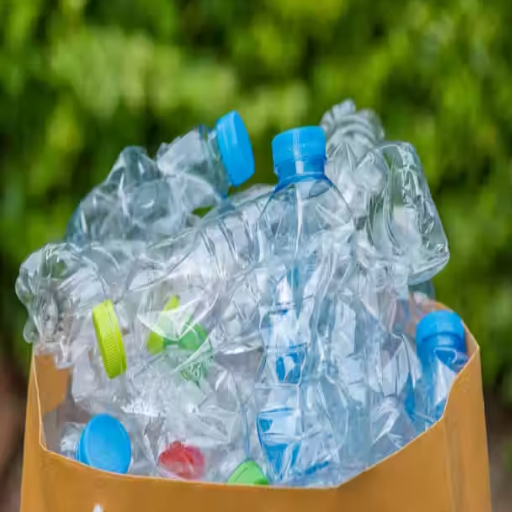
Plastic Pollution Forecasts for 2050
By 2050, plastic production worldwide could increase significantly if current trends continue. Studies have forecasted that, by the midpoint of the century, plastic production is expected to triple due to demand from industries such as packaging, consumer goods, and construction. Such a meteoric rise puts tremendous pressure on waste management systems, many of which are unable to carry the weight, likely leading to 12 billion metric tons of plastic waste being dumped into landfills and the natural environment.
The marine ecosystem is poised to incur drastic effects as further plastic deposition in the oceans occurs. Suppose no concrete action is taken to curb the menace. In that case, it is projected that, by weight, there will be more plastic than fish in the oceans, thereby interfering with marine biodiversity and crippling crucial food chains. Further contamination of water sources by microplastics might also be a grave public health concern, as these could be making their way into drinking supplies and food systems.
On the positive side, advances in sustainable materials, recycling technologies, and the global push for a circular economy may mitigate some of the adverse effects. A growing market consists of alternative biodegradable products, and recently developed chemical recycling methods break down plastic into reusable components. Nevertheless, the prevention of worst-case scenarios will come only through a mix of ambitious policy reforms, behavioral changes among consumers, and accountability measures at the industrial level.
In light of this grim outlook, it is urgent to take immediate and coordinated measures to curb plastic production, enhance recycling technology, and promote greener alternatives to prevent the worst from happening. A worldwide fight is on to alter this nasty trajectory and counteract the environmental, economic, and social effects of plastic poisons that have gone unchecked.
Other Innovative Ways to Cut Down on Plastic Use
The fight against plastic pollution has spurred many innovative solutions to reduce plastic consumption and provide sustainable alternatives. One such method involves the manufacture of biodegradable and compostable bioplastics from renewable resources such as cornstarch, algae, or even food waste. These are alternatives that break down more amicably in nature, thereby reducing long-term pollution.
Another breakthrough is the application of advanced recycling technologies, such as chemical recycling, which breaks down plastics at the molecular level. These give the materials a chance to be reused over and over again without losing equipment or physical characteristics, thus opening the door to circular economy possibilities. These packaging systems encourage end-users to refill or reuse, thereby promoting a behavior change that ultimately reduces reliance on single-use plastics in the corporate and retail sectors.
Legislation and policy changes lay a foundation for systemic reform. Bans on single-use plastic items, along with the EPR, are pushing manufacturers to look into sustainable packaging innovations. Meanwhile, awareness and educational programs equip people and organizations to adopt zero-waste behaviors and prioritize eco-conscious choices.
Moreover, emerging technologies such as enzyme-mediated plastic degradation indicate how actual scientific progress can now address issues that once seemed unmanageable. These advances, coupled with global alliances and pledges, mark a significant step in finding solutions for the plastic crisis and setting sights on a greener future.
How Individuals Can Make a Difference
Every person has the power to choose to fight this plastic crisis. Ending single-use plastics appears to be the primary and most significant focus of the battle. There are numerous options for reducing single-use plastic: consider buying a reusable water bottle, reusable bags for grocery shopping, and reusable utensils. It is the little things—a few less plastic packs for bulk items, buying items with minimal packaging, and opting for items with biodegradable packaging— that cut down on plastic use.
Another vital step is to recycle smartly. Not all plastics can be recycled. Still, if one learns what can and cannot be recycled in their area and diligently separates their recycling accordingly, then the system will function better for all of us. These green-minded folks promote recycling efforts by patronizing local businesses that put recycling first in their efforts, produce recycled goods, or offer no packaging options.
The tools of advocacy and education also work wonders. By raising awareness about the hazards of plastics and endorsing policies to reduce plastic usage, the people may instigate communal and systemic transformation. The more we participate in activities like clean-up drives or zero-waste challenges, the better our local areas will be protected, and a climate of community engagement will be created.
Data indicate that small and steady changes at the individual level, when multiplied across communities, can yield significant results in reducing plastic waste. This collective action for a greener future would align with personal actions towards the broader goal of sustainable development.
Fascinating Facts About Plastic That Will Surprise You
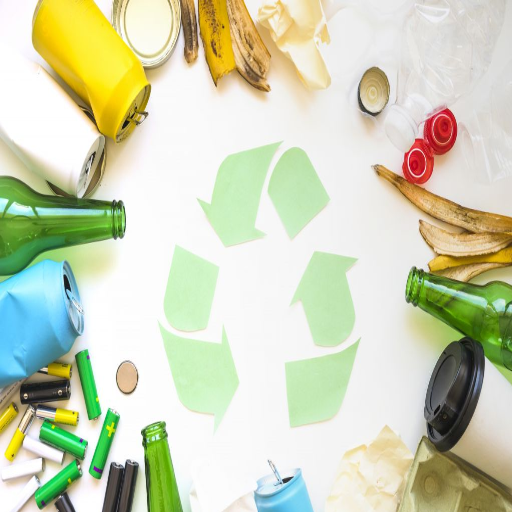
Top facts about plastic pollution
In terms of plastic pollution, I’ve encountered facts that are no less shocking and eye-opening. Approximately over 300 million tons of plastic are produced worldwide every single year. What is more alarming is that almost fifty percent of that plastic is intended for one-time use and is discarded after being used once. This could significantly contribute to the estimated 8 million tons of plastic that end up in our oceans every year, thereby inflicting specific harms on the marine ecosystem and wildlife, which we are only beginning to comprehend fully.
Perhaps the more surprising fact is just how pervasive microplastics have become in our environment. Microplastics are tiny pieces of plastic, in many cases less than 5 millimeters in size, and they exist virtually everywhere-they can be found in the deepest parts of the ocean, in food, and even in the air we breathe. Microplastics have even been detected in human blood, eliciting concern among scientists about the long-term effects on our health, which are still under research.
Plastic pollution is not just an environmental issue, but also a socio-economic one. For instance, when the clean-up costs associated with plastic waste are staggering, it is challenging for communities and governments to sustain them. Moreover, plastic production is very much dependent on fossil fuels, thereby contributing to climate change. These are some of the key facts that demonstrate why we must address this issue as a matter of urgency on the international stage. It is not easy, but one can start walking by just being aware and taking action.
Interesting Plastic Facts You Didn’t Know
In my professional beginnings as an explorer of plastic pollution, I was confronted with some of these quite shocking statistics. Did you know that every piece of plastic ever created still exists in one form or another? The plastic never completely biodegrades; instead, it breaks down into tiny particles called microplastics, which can remain in the environment for hundreds of years. Microplastics have even been discovered in the most remote places on Earth, from the oceanic depths to the Arctic ice, and now in our food and water.
Trash is dumped all over the streets simply because several citizens are too careless to put their trash in the provided trash cans. A sight such as this is most disturbing to watch.
Another startling fact proving plastic’s downside: 40 percent of all plastic created is used in packaging, most of which is disposed of after a single use. So, the plastic packaging that holds your favorite products lives on for centuries after being used for just a few minutes. Secondly, it has been revealed that only about 9 percent of all the plastic waste generated is recycled; the rest is dumped into landfills, burned, causing toxic emissions, or pollutes the environment.
Finally, I found it incredibly surprising to learn about the significant impact plastics have on wildlife. More than 100,000 marine animals and millions of seabirds die every year due to plastic pollution, either by consuming it or through entanglement. Knowing these facts has fundamentally changed how I regard the everyday use of plastics and set me on a path to exploring sustainable alternatives. This very much underscores the urgency and importance of individual and community actions.
In a Nutshell: The Role of Education in Combating Plastic Use
Education receives credit for building awareness and empowering individuals to make informed choices. For me, being exposed to the health of the ecosystem and how plastics are ruining it was truly an eye-opener, changing the way I live. Criminal acts of inhumanity were committed for those few years when my conscience was asleep: Queuing up my peaceful days of indifference led from those first few years of “good practice” back to “good days” shock. From understanding how microplastics enter our water systems to discovering how they harm our marine life, the recognition of this issue through the course of my personal development led me to a sense of solutions that consciously start at the individual level of action. Once people have this knowledge, they can go on to minimize the use of single-use plastics and begin to spread the word to those around them. Through educating others, I have witnessed numerous instances where discussions have led to collective endeavors and genuine change.
Education also keeps communities informed of new solutions and sustainable alternatives. I was not even aware of the biodegradable materials available, recycling programs in place, and local policies for reducing plastic waste before I educated myself on the topic. Now, I try to find ways to support these initiatives and incorporate them into my lifestyle. Schools, workshops, and social networking sites can serve as effective vehicles for knowledge dissemination, especially when accompanied by an immediate call to action. With adequate knowledge, we are no longer helpless users of plastics but shapeful co-creators in pollution mitigation.
Education strengthens the capacity of humans for responsibility and connectivity. We understand—it is because of that education—that every choice we make, ever reusable bags, bottles, straws, matters. I have come to believe that awareness must remain a continuous process: one of keeping learning and sharing insights with others. The more I learn and share, the more the fight against plastics becomes a group effort rather than mine alone. That collective awareness, education, and action are the only way to bring about long-term structural changes in plastic usage.
Reference Sources
-
12 Facts About Plastic Pollution You Need to Know – Giving Compass
Highlights key facts about plastic production, recycling, and its global impact. -
8 Facts About Plastic Use in the World – Be The Story
Discusses global plastic production, recycling rates, and environmental challenges. -
Plastic Fun Facts – Emco Plastics
Explores interesting uses of plastics in industries like aerospace and beyond. -
Applications and Societal Benefits of Plastics – PMC
Examines how plastics contribute to health, safety, and urban water solutions. -
History and Future of Plastics – Science History Institute
Provides insights into the invention of synthetic plastics and their evolution. - View Plastic Pellets Manufacturers in China
Frequently Asked Questions (FAQs)
What are some surprising facts about plastic pollution?
Plastic pollution constitutes a significant environmental menace, threatening the life and living systems of our planet. With millions of tonnes of plastic entering the ocean each year, the production and pollution of plastics persist. Plastic pollution mainly consists of single-use plastic. Another alarming statistic insinuates that by 2050, there could be more plastic than fish by weight in the oceans! Hence, the females involved in packaging, which involves vast amounts of plastic and a plethora of plastic products, are a major contributor to the waste going into landfills. Marine life, such as turtles and blue whales, mistake plastics for food, leading to severe health problems. For better solutions to these problems, the impact of plastic pollution has to be understood.
What is the time required for plastic to disintegrate?
Plastic can take hundreds of years, up to 450 years, to disintegrate in the environment. This extended period of decomposition has contributed over time to the present plastic crisis. Many types of plastics, such as plastic bags and bottles, remain in landfills or the ocean for centuries, making them the primary contributor to marine litter. In addition to polluting the environment, plastic breaks down into microplastics that can contaminate the food chain and harm aquatic life. Given its slow degradation, it is evident that our current plastic production is grossly unsustainable, and we should urgently mitigate plastic waste.
What effect does plastic have on marine animals?
Disposing of plastic into the ocean creates a big problem for marine animals. Many species are entangled in fishing nets or ingest plastic debris. Injuries and deaths can occur in various animal species, including sea turtles and seabirds. Plastics can pollute the water with harmful chemicals, which in turn affects the health of marine ecosystems. Moreover, these tiny plastic pieces were found in the stomachs of fish, raising questions about their impact on the food chain and human health. The plastic crisis demands urgent action to protect marine wildlife and restore the oceans.
How much plastic is created yearly?
The birth of a plastic item corresponds to an amount of about 300,000,000 tonnes per annum. Alongside the production of plastic goods in various shapes, disposable plastics and packaging have a considerable demand. Unfortunately, when combined, all this plastic enters the environment as pollutants, including landfills and, ultimately, the oceans. Recycling plastic is hence worth it, even if it is sometimes rendered ineffective when compared to the actual volume of generated plastic waste. Reducing plastic production and promoting sustainable alternatives are thus vital steps in mitigating the pollution crisis.
What could be the dangers associated with single-use plastic?
Some everyday single-use plastic items that cause pollution include straws, bags, and plastic packaging. These items have a short-term use but could take several hundred years to degrade in the environment, thus polluting pollution. Single-use plastics litter our oceans, causing either entanglement for marine life or ingestion by animals. The cumulative effect of such plastic items amounts to devastating environmental impacts, compelling us to reduce our dependence on single-use plastics. Bridging the plastic pollution problem by switching to reusable alternatives is a crucial step.
How do we curb the plastic menace?
Various sinister faces are overshadowing the reduction of plastic waste: recycling, alternatives, and waste management. Picking reusable over disposable plasticware needs to begin at the personal level. Then, bigger targets can be set to work on plastic recycling and waste management with policy advocacy. Informing others about the dangers of plastic pollution and promoting sustainable practices can lead to significant change. A joint effort is needed to curb the ever-increasing amount of plastic threatening our oceans and wildlife.

